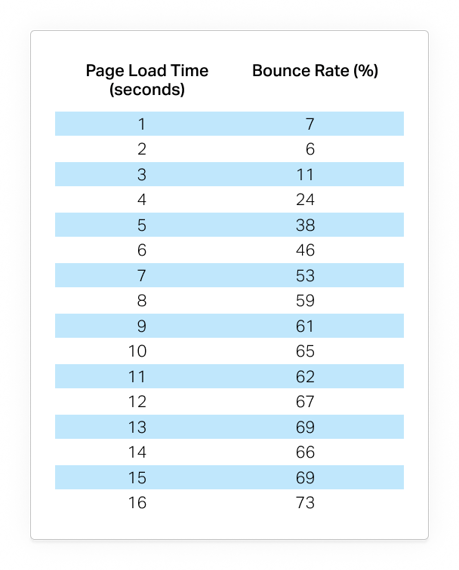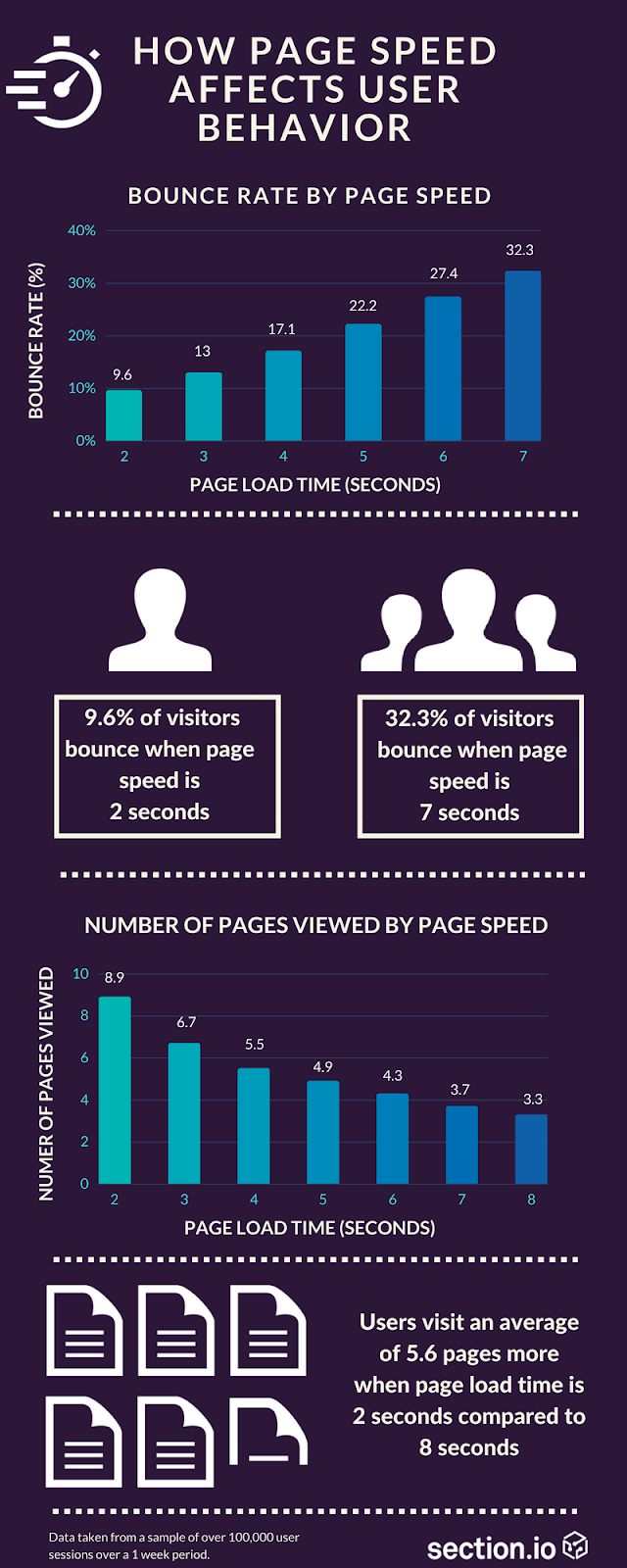How Site Speed Impacts User Experience
Imagine sitting and waiting for a page to load. You are a computer user- you get it. When a page is slow, we exit out of it. Plain and simple. But, it turns out that there is much more to it than a pure annoyance. Google Search engines rank pages based on page load time, and Facebook announced it will prioritize page links that load the quickest in their algorithm. Your potential customer may not even get a chance to exit out - because she will never even see your link.
Internet monopolies like Amazon have researched how site speed impacts user experience. One Amazon study concluded that slow loading speed can cause a 1% loss in revenue for every 100ms delay in page load time. Another source, Section, claims that a faster page can result in a 16.5% increase in conversion rate, which means more revenue.
How Are These Studies Conducted?
Google Analytics says they measure website speed and bounce rate by analyzing a sample size of 1% of visitors. This can be a tiny percentage, but the behaviors are apparent.
What is Bounce Rate?
What does bounce rate mean? Bounce rate is the percentage of visitors who view your site then leave. There are many other factors besides page speed that impact bounce rate, including performance-related and content-related factors. Page speed is a performance factor. If you can’t get the page load speed to be under 2 seconds, you better make sure your content is outstanding in balancing the frustration that may come with the user’s waiting experience.
You can monitor your site's user experience with various Visitor Insights tools - including tracking bounce rate and what’s causing the bounce.
electrIQ recommendation: Monitor your image sizes and compress any that are borderline too heavy. Anything above 150kb is pushing your luck in the speed department.

Page Speed Benchmarks
Okay, we get it. I’m going to lose potential visitors if my website is slow. So how fast does it have to be? Under 2 seconds.
Since 2015, Google has claimed this benchmark to limit most visitors from leaving your page as they wait for it to load. Yet, the average load time for a web page in 2017 was 3.21 seconds. One second shouldn’t be that big of a deal, right? It is.
Within one second, the bounce rate increases by 27%. For pages loading within 2 seconds, the bounce rate is 9%, but at 3 seconds - just a mere 1 second later - the bounce rate is 38%. A bad user experience leads to a high bounce rate and ultimately a loss of revenue.
Page Speed Impacts the Number of Pages Viewed, Too
A user who views a page with an average page load time of 2 seconds will view 8.9 pages on average. Comparatively, a user who experiences a 7-second loading delay will only view 3.7 pages after. The number of pages viewed by a user goes down exponentially based on how long the page takes to load.
Think about it! It makes sense - if a website is taking too long, you will get your information and get out. There’s no need, or time left, to hang around and look at more pages if they take forever to load.
Loss in Page Views Equals Loss in Revenue
Let's think logically about this. How is anyone going to purchase from your website if you can't see the page? Picture trying to buy a new pair of sneakers, and the image is not loading. You are not going to purchase without seeing what the sneakers look like. While an extreme example, you get the point.
Pageviews also impact advertising revenue if you’re a publisher. Pages viewed per session is a crucial metric for buying sites to rely on when buying space on your site. The cost and effort of acquiring a new visitor are usually high, so you want them to stay and browse as long as possible. The faster pages load, the more likely they will stay (and return!).
5 Site Speed Statistics
These statistics from Unbounce provide more evidence of the problems page speed may be causing your site.
- 46% of people say waiting for pages to load is what they dislike most about browsing the web on mobile
- On average, it takes 15.3 seconds to load a mobile landing page
- Sites that load in 5 seconds see 70% longer average sessions compared to those that load in 19 seconds
- 73% of mobile users have encountered websites that take too long to load
- 79% of web shoppers who have trouble with website performance say they won’t return to the site again

